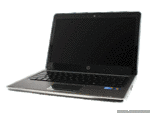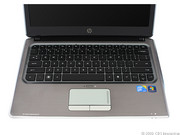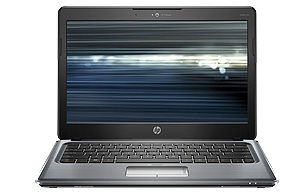HP Pavilion dm3-1040us
Specifications

Price comparison
Average of 1 scores (from 1 reviews)
Reviews for the HP Pavilion dm3-1040us
Source: Comp Reviews
 Archive.org version
Archive.org versionHP's Pavilion dm3-1040us is really designed for those looking at a highly portable laptop that provides a more stable computing experience compared to a netbook. With a $600 price tag, it certainly is affordable but does sacrifice the performance and running time compared to new ultra-low voltage platform laptops. Its lower cost does come with a few annoyances including a display with limited viewing angles and a difficult to use trackpad. Definitely a step up for those than want more than a netbook but don't want to spend too much.
Single Review, online available, Short, Date: 03/19/2010
Rating: Total score: 60%
Comment
Intel Graphics Media Accelerator (GMA) 4500MHD: Onboard (shared Memory) GPU built in the GM45, GE45 and GS45 chipset (Montevina). Because of two more shaders and a higher core clock, much faster than the old GMA X3100. Still not advisable for gamers (DirectX 10 games not playable or only with very low settings). The integrated video processor is able to help decode HD videos (AVC/VC-2/MPEG2) , e.g., for a fluent Blu-Ray playback with slow CPUs.
Only some 3D games with very low demands are playable with these cards.
» Further information can be found in our Comparison of Mobile Graphics Cards and the corresponding Benchmark List.
Intel Pentium Dual Core: The return of the name Pentium, though it is a Yonah core. In fact, it is a double Core processor with a very good relation of performance to current consumption.
SU4100: Entry-level dual core processor for slim and light subnotebooks. Due to the Pentium name, the CPU may have less power saving features than Core 2 Duo processors.» Further information can be found in our Comparison of Mobile Processsors.













